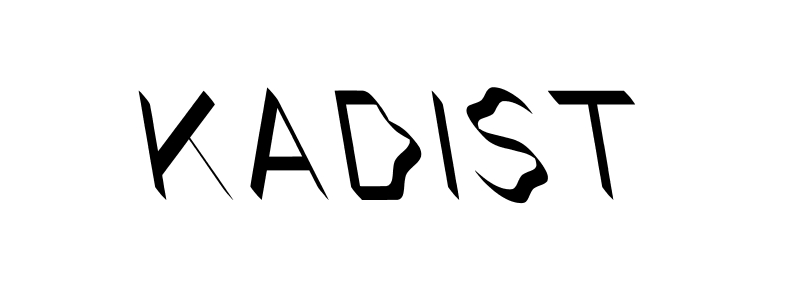Blindseye Arranger (Max)
2013 - Film & Video (Film & Video)
Brian Bress
Blindseye Arranger (Max) (2013) features a greyscale arrangement of rudimentary shapes layered atop one another like a dense cluster of wood block prints, the juxtaposition of sharp lines and acute angles creating an abstracted field of rectangular and triangulated forms composed as if in a cubist landscape. As the video progresses, however, a disembodied hand begins to move these forms, animating a pictorial frame that was previously still. The hand – ostensibly the “arranger” of the works title – functions as a metonym of the artist’s hand, quite literally bringing a motionless work to life. The hand in Blindseye Arranger , though, also signals a shift towards the performative, functioning as a reminder that all works of art are created by a maker’s “hand” and, in such, are never fully separate from the context in which they are made. Bress’s gesture towards interdisciplinarity in his work, by extension, signals an important moment in which questions of medium-specificity give way to more trenchant inquiries into notions of authorship and creative process.
Although originally trained in filmmaking and animation, Brian Bress explores the influence of pictorial traditions on contemporary media-based practices. His single-shot videos utilize painterly effects such as geometric abstraction to create visual compositions that blur presumed boundaries between contemporary media-based work and more traditional disciplines such as sculpture and painting. His work is deliberately processed-based and his videos, by extension, explore how visual motifs “evolve” over time through as a viewer engages with a given object or image. Animated figures and actors – such as disembodied hands – disrupt these seemingly still frames, repositioning these works in the context of film while also suggesting the presence of the artist’s hand. Bress’s videos may seem overtly indebted to creative lineages, and his images frequently border on the surreal. But in gesturing towards past works, his videos signal the emergence of creative practices enabled through technological advancements while also offering a meditation on a durational aesthetics privileged in media-based work.
Colors:
Related works of genres: » american video artists, » american conceptual artists, » artists from los angeles
» see more

© » KADIST
Trisha Donnelly
2007Untitled is a black-and-white photograph of a wave just before it breaks as seen from the distance of an overlook...

© » KADIST
Barbara Bloom
1997In the 1980’s, while browsing Parisian fleamarkets, Barbara Bloom stumbled into an anonymous watercolor (dating to around 1960) in one of Paris’ fleamarkets, probably a study made by an interior designer for a bedroom...

© » KADIST
Rachel Rose
2019First Born by Rachel Rose is part of a series of works titled Borns which expands on the artist’s longstanding interest in the organic shape of eggs...
Related works featuring themes of: » Appropriation Art, » Artist's Frame, » Film/Video, » Grotesque, » American
» see more

© » KADIST
Dinh Q. Lê
2008Hill of Poisonous Trees (three men) (2008) exemplifies the artist’s signature photo-weaving technique, in which he collects diverse found photographs—portraits of anonymous people, stills from blockbuster films, or journalistic images—cuts them into strips, and weaves them into new composition...

© » KADIST
Jedediah Caesar
2009For Untitled, Caesar encased recycled objects such as scraps of plywood, paper or cloth in resin and then cut and reassembled the pieces into abstract forms...

© » KADIST
Mario Garcia Torres
2005Mario Garcia Torres films a game of Charades among professional actors guessing the former North Korean dictator’s favorite Hollywood films...

© » KADIST
Yin-Ju Chen
2011This work includes sketches for Extrastellar Evaluations , the project she produced at Kadist...
Other related works, blended automatically
» see more

© » KADIST
Dinh Q. Lê
2008Hill of Poisonous Trees (three men) (2008) exemplifies the artist’s signature photo-weaving technique, in which he collects diverse found photographs—portraits of anonymous people, stills from blockbuster films, or journalistic images—cuts them into strips, and weaves them into new composition...

© » KADIST
Jedediah Caesar
2009For Untitled, Caesar encased recycled objects such as scraps of plywood, paper or cloth in resin and then cut and reassembled the pieces into abstract forms...

© » KADIST
Oscar Munoz
2009In Ante la imagen (Before the Image, 2009) Muñoz continues to explore the power of a photograph to live up to the memory of a specific person...
Related works sharing similar palette
» see more

© » KADIST
Hans-Peter Feldmann
The types of objects Feldmann is interested in collecting into serial photographic grids or artist’s books are often also found in three dimensional installations...

© » KADIST
Mary Reid Kelley
2010Situated in German-occupied Belgium at the end of World War I, Y ou Make Me Iliad by Mary Reid Kelley focuses on the story of two...
Related works from the » 2010's created around » Los Angeles, California
» see more

© » KADIST
Will Rogan
2010MUM , the acronym used to title a series of Rogan’s small interventions on found magazines, stands for “Magic Unity Might,” the name of a vintage trade magic publication...

© » KADIST
Phillip Maisel
2015While his works can function as abstract, they are very much rooted in physicality and the possibilities that are inherent in the materials themselves...

© » KADIST
Rodney McMillian
2013In his evocative Landscape Paintings, McMillian uses second-hand bedsheets, sourced from thrift shops, as his starting point...

© » KADIST
Matt Lipps
2011In the series Horizons (2010), Lipps uses appropriation to riff on Modernism’s fascination with abstract form...
Related works found in the same semantic group
» see more

© » KADIST
Alejandro Almanza Pereda
2015This still life falls apart, or rather floats apart as the composition is proved unstable and constantly morphing...

© » KADIST
John Houck
2013John Houck’s multi-layered photographic compositions immortalize nostalgic objects from the artist’s childhood, manipulated in the studio and in post-production into unreal still-life arrangements...





